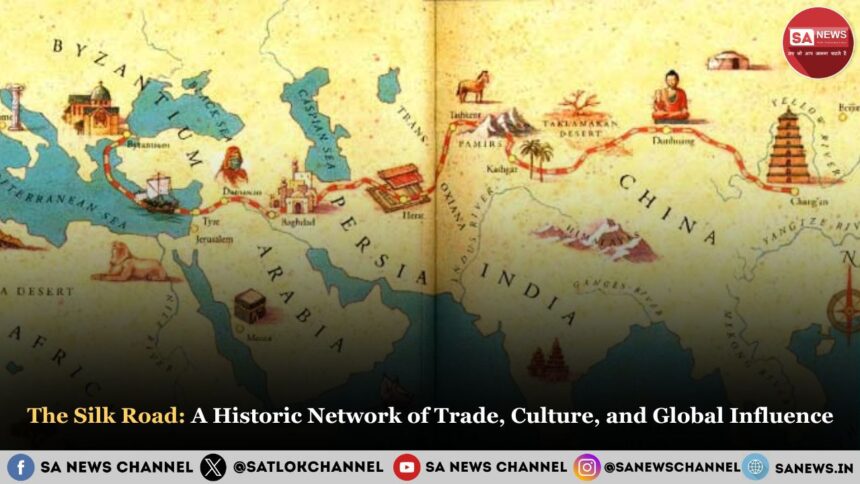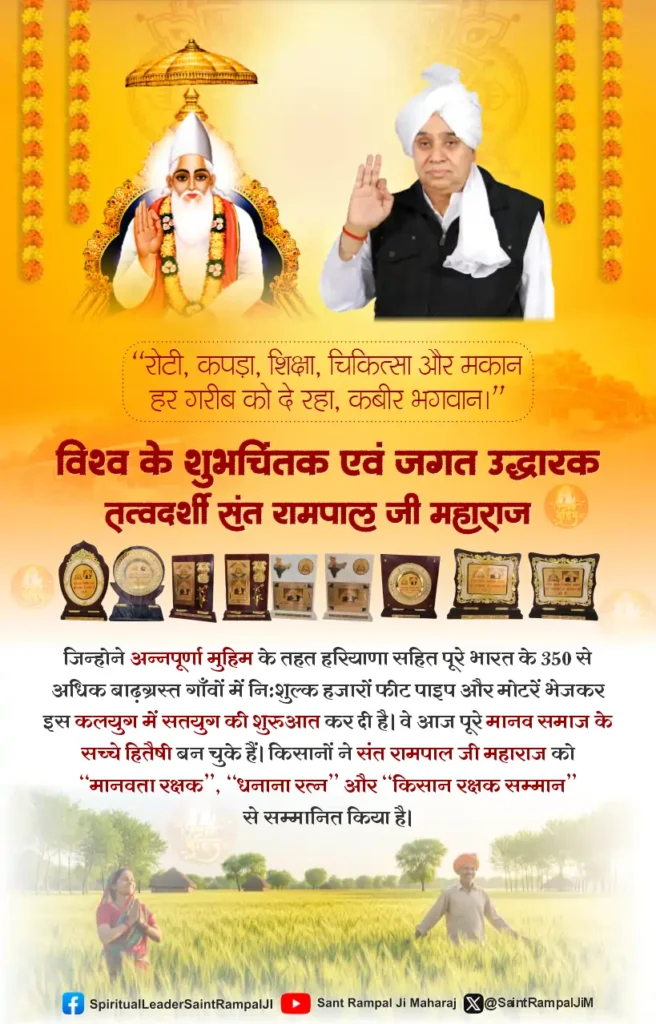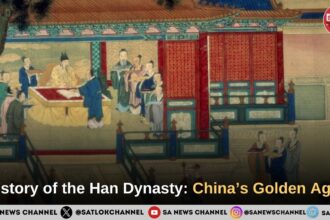The Silk Road is one of the most significant trade networks in world history, spanning thousands of miles and connecting the East and West. This ancient route facilitated the exchange of goods, ideas, culture, and technology between China, Central Asia, the Middle East, and Europe.
- The Origins of the Silk Road: Early Trade Routes (Before the Silk Road)
- The Role of the Han Dynasty (206 BCE – 220 CE)
- The Expansion and Flourishing of the Silk Road
- The Role of the Roman Empire
- The Sassanian and Byzantine Influence
- The Rise of the Islamic Caliphates
- The Spread of Religion Along the Silk Road
- Buddhism: From India to China, Korea, and Japan
- Kushan Empire (1st–3rd century CE):
- Dunhuang Caves:
- China, Korea, and Japan:
- Islam: From the Middle East to Central Asia and South Asia
- Christianity: From the Roman Empire to Central Asia
- Zoroastrianism and Manichaeism:
- Impact of Religious Exchange
- The Transmission of Knowledge
- The Decline of the Silk Road
- The Impact of the Black Death
- The Rise of Maritime Trade
- The Legacy of the Silk Road
- The Spread of Religion on the Silk Road: A Spiritual Perspective
- The Journey of Religions on the Silk Road
- Buddhism: A Search for Peace, But Not Ultimate Salvation
- Islam: Devotion Without True Identification of God
- Christianity: Influence Without Tatvagyan
- Zoroastrianism and Manichaeism: Partial Truths Without the True God
- The Real Spiritual Knowledge (Tatvgyan) Was Missing on the Silk Road
- FAQs About the History of Silk Road
- 1. Why is it called the Silk Road?
- 2. Which countries were part of the Silk Road?
- 3. What were the main goods traded on the Silk Road?
- 4. What caused the decline of the Silk Road?
- 5. How does the Silk Road influence modern trade?
- Connect With Us on the Following Social Media Platforms
The Silk Road played a crucial role in shaping the civilizations along its path and remains an enduring symbol of globalization and cultural diffusion. In this article, we will explore the history of the Silk Road, its origins, expansion, impact, decline, and legacy, offering an in-depth look at how this network transformed human history.
The Origins of the Silk Road: Early Trade Routes (Before the Silk Road)
Before the Silk Road became a formalized trade network, ancient civilizations engaged in regional trade. The earliest evidence of long-distance trade dates back to the third millennium BCE when Mesopotamians traded with the Indus Valley civilization and Egyptians exchanged goods with the Nubians.
In China, the domestication of horses around 2000 BCE and the rise of the Shang and Zhou dynasties facilitated internal trade. By 500 BCE, the Persian Royal Road, built by the Achaemenid Empire, connected Sardis (in modern Turkey) to Susa (in present-day Iran), establishing an early model for long-distance trade routes.
The Role of the Han Dynasty (206 BCE – 220 CE)
The Silk Road as we know it began during the Han Dynasty when Emperor Wu of Han (r. 141–87 BCE) sent the diplomat Zhang Qian to Central Asia around 138 BCE. His reports on Central Asian civilizations, such as the Yuezhi and the Bactrians, encouraged the Han government to establish trade routes to acquire horses and other valuable goods.
As a result, the Han Dynasty expanded its territory into the Tarim Basin (modern-day Xinjiang, China), securing control over vital trade hubs like Dunhuang and Kashgar. This laid the foundation for the Silk Road, which linked China to Central Asia, Persia, and eventually the Mediterranean.
The Expansion and Flourishing of the Silk Road
Goods Traded Along the Silk Road: The name “Silk Road” derives from the lucrative Chinese silk trade, but many other goods were transported along the route, including:
- From China: Silk, paper, porcelain, tea, lacquerware
- From Central Asia: Horses, jade, wool, furs
- From India: Spices, textiles, precious stones, Buddhism
- From Persia: Carpets, glassware, perfumes
- From the Mediterranean: olive oil, gold, silver, glass
The Role of the Roman Empire
By the first century CE, the Silk Road extended into the Roman Empire. Roman aristocrats highly valued Chinese silk, which was traded through intermediaries such as the Parthians and Sogdians. Roman coins, glassware, and luxury items made their way to China, demonstrating the far-reaching economic impact of the route.
The Roman historian Pliny the Elder (23–79 CE) noted that Rome spent enormous sums on Eastern luxuries, particularly silk. Despite the high costs, the demand remained strong, fueling the Silk Road’s expansion.
The Sassanian and Byzantine Influence
Following the fall of the Roman Empire, the Sassanian Empire (224–651 CE) in Persia became a dominant force in Silk Road trade. The Sasanians controlled key trade routes and facilitated the exchange of goods between China, India, and the Mediterranean.
Also Read: Ancient India: A Complete History from Prehistoric Times to Early Empires
Meanwhile, the Byzantine Empire (330–1453 CE) continued Rome’s silk trade, even attempting to break China’s monopoly by smuggling silkworms into their territory in the 6th century. This marked the beginning of silk production in the Mediterranean, reducing Europe’s dependence on Chinese silk.
The Rise of the Islamic Caliphates
In the 7th and 8th centuries, the expansion of the Islamic Caliphates, particularly the Umayyads and Abbasids, revitalized Silk Road trade. Islamic merchants played a crucial role in connecting China with the Middle East and Africa.
Baghdad, the Abbasid capital, became a key trading hub where goods from across the world were exchanged. Muslim traders also introduced new technologies, such as paper making from China, which spread to Europe through the Islamic world.
The Spread of Religion Along the Silk Road
The Silk Road was not just a commercial trade route it was also a powerful channel for the exchange of spiritual and philosophical ideas. Along with silk, spices, and precious goods, religious beliefs traveled across vast regions, influencing cultures and shaping civilizations. Missionaries, monks, traders, and travelers carried religious texts, art, and traditions, allowing different faiths to flourish and evolve.
Buddhism: From India to China, Korea, and Japan
Buddhism was one of the most significant religions to spread via the Silk Road. Originating in India during the 5th–4th century BCE, it reached Central Asia and China around the 1st century CE through merchants and monks. Pivotal developments included:
Kushan Empire (1st–3rd century CE):
The Kushans, ruling parts of India and Central Asia, were instrumental in spreading Mahayana Buddhism along the Silk Road.
Dunhuang Caves:
Buddhist monks traveling along the route built temples and monasteries, with Dunhuang in China becoming a major Buddhist learning center.
China, Korea, and Japan:
By the 4th–6th centuries CE, Buddhism had taken root in China and further spread to Korea and Japan, influencing art, philosophy, and governance.
Islam: From the Middle East to Central Asia and South Asia
With the rapid expansion of the Islamic Caliphates in the 7th–8th centuries, Islam became a dominant religious and cultural force along the Silk Road. Its spread was driven by:
Arab and Persian Traders:
Muslim merchants established trade networks in Central Asia, introducing Islamic beliefs and practices.
Sufi Missionaries:
Sufism, a mystical branch of Islam, played a key role in spreading the religion peacefully through spiritual teachings and interactions with local populations.
Mosques and Learning Centers:
Cities like Bukhara, Samarkand, and Kashgar became important Islamic centers, fostering scholarship in astronomy, medicine, and philosophy.
Christianity: From the Roman Empire to Central Asia
Christianity also found its way along the Silk Road, particularly through Nestorian Christians (a branch of Eastern Christianity). Key aspects of its spread include:
Nestorian Missionaries:
By the 7th century CE, Nestorian Christian communities had been established in Persia, Central Asia, and even China.
Tang Dynasty and the Nestorian Stele (781 CE):
This Chinese inscription details how Christianity (referred to as “Jingjiao”) was introduced and accepted in parts of China.
Silk Road Churches: c
Evidence of Christian communities has been found in Central Asia, particularly in places like Samarkand and Merv.
Zoroastrianism and Manichaeism:
From Persia to China two lesser-known but historically significant religions also spread along the Silk Road:
Zoroastrianism:
Originating in ancient Persia, Zoroastrianism influenced religious traditions in Central Asia and India. Persian merchants brought their faith along the Silk Road, establishing fire temples in trade hubs.
Manichaeism:
Founded by the Persian prophet Mani in the 3rd century CE, this syncretic religion combined elements of Zoroastrianism, Christianity, and Buddhism. Manichaean texts were found in Silk Road sites, including Dunhuang and Turpan.
Impact of Religious Exchange
The Silk Road didn’t just spread religions it also encouraged interfaith interactions, philosophical discussions, and artistic influences. Buddhist and Islamic architecture merged in Central Asia, Christian and Persian motifs appeared in Chinese art, and new hybrid belief systems emerged.
The religious diffusion along the Silk Road shaped the spiritual landscape of many regions, leaving a legacy that still resonates today.
The Transmission of Knowledge
Innovations such as papermaking and printing traveled from China to the Middle East and Europe via the Silk Road. Gunpowder, another Chinese invention, also spread along this route, ultimately revolutionizing warfare in Europe.
Mathematical concepts from India, including the numeral system and zero, were transmitted through Islamic scholars to Europe. This knowledge played a key role in the development of modern mathematics and science.
The Decline of the Silk Road
Mongol Empire and the Pax Mongolica
The Mongol Empire (1206–1368) under Genghis Khan brought stability to the Silk Road by unifying vast territories from China to Europe. The Pax Mongolica (Mongol Peace) facilitated safe trade, leading to a golden age of Silk Road commerce. However, as the Mongol Empire fragmented in the 14th century, political instability and conflicts disrupted trade routes.
The Impact of the Black Death
The Bubonic Plague, or Black Death, which spread via Silk Road trade routes, devastated populations across Asia and Europe in the 14th century. The resulting population decline reduced trade activity significantly.
The Rise of Maritime Trade
By the 15th century, European exploration shifted global trade from overland routes to maritime trade. The Portuguese, Spanish, and later the Dutch and British developed sea routes to China and India, reducing reliance on the Silk Road. The Ottoman Empire’s control over trade routes in the Middle East also contributed to the decline, as they imposed heavy taxes on European merchants, prompting the search for alternative routes.
The Legacy of the Silk Road
Although the traditional Silk Road declined, its influence continues today. The exchange of ideas, religions, and technologies facilitated by the route shaped global civilizations. Modern initiatives, such as China’s Belt and Road Initiative (BRI), aim to revive and expand Silk Road trade through infrastructure development and economic partnerships.
The Silk Road also inspired UNESCO’s Silk Roads Programme, which promotes cultural heritage and academic research on the route’s historical significance.
The history of the Silk Road is a testament to humanity’s desire for connection, trade, and cultural exchange. It was not just a commercial route but a channel for knowledge, art, religion, and innovation. While the original Silk Road has faded, its impact is still felt in modern trade, diplomacy, and global interconnectedness.
As nations invest in reviving ancient trade routes, the Silk Road’s legacy continues, reminding us of the power of cross-cultural interaction and economic cooperation in shaping world history.
The Spread of Religion on the Silk Road: A Spiritual Perspective
The Silk Road was not just a route for material trade but also for the exchange of religious and philosophical beliefs. As per the spiritual wisdom of Tatvdarshi Sant Rampal Ji Maharaj, while various religions spread along this route, they lacked true spiritual knowledge (Tatvgyan), leading people into blind faith and incomplete worship. The real purpose of human life is to seek the true path to salvation, which was not fully revealed through the religious exchanges on the Silk Road.
The Journey of Religions on the Silk Road
Buddhism: A Search for Peace, But Not Ultimate Salvation
Buddhism originated in India and spread to China, Korea, and Japan through monks and traders. Though it preached non-violence, meditation, and detachment, Gautam Buddh himself did not attain salvation. His followers did not receive the knowledge of the Supreme God, Kabir Saheb Ji, who alone can grant true liberation. The concept of Nirvan in Buddhism does not align with the ultimate salvation described in holy scriptures like the Bhagavad Gita and Vedas.
Islam: Devotion Without True Identification of God
Islam expanded along the Silk Road with traders and Sufi saints spreading their beliefs. While it emphasizes monotheism and devotion, the true identity of the Supreme God is missing. Allah Kabir Saheb Ji appeared before Prophet Muhammad but was not recognized by him. The knowledge provided in the Holy Quran (Surah Al-Furqan 25:58, Surah Al-Shura 42:1-2) hints at a Supreme Power beyond the creator of the universe, whom people have yet to identify correctly.
Christianity: Influence Without Tatvagyan
Christianity spread along the Silk Road, with Nestorian Christians reaching Persia and China. However, the Holy Bible lacks the complete knowledge of salvation. Jesus Christ was a divine messenger but did not have the ultimate knowledge of Satlok, the eternal abode. He also suffered due to incomplete spiritual wisdom, as evident when he prayed to God for help but did not know how to escape suffering.
Zoroastrianism and Manichaeism: Partial Truths Without the True God
Zoroastrianism and Manichaeism, which mixed various religious beliefs, were also spread through the Silk Road. However, their followers remained unaware of who the Supreme God is, where He resides, and how to attain Him. The fire worship and dualistic philosophy of these religions contradict the true spiritual knowledge given by Kabir Saheb Ji, who explains that worship should be directed towards Param Akshar Brahm (Supreme God Kabir) rather than natural elements like fire, sun, or stars.
The Real Spiritual Knowledge (Tatvgyan) Was Missing on the Silk Road
While the Silk Road helped in the exchange of religious ideas, it did not lead people to true liberation. Scriptures of all religions indicate that there is one Supreme God, who is above Kaal (Brahm) and resides in Satlok. This truth was not revealed to people traveling the Silk Road because saints and scholars lacked Tatvgyan (True Spiritual Knowledge).
The Quran (Surah Al-Furqan 25:58) says to believe in the “ever-living” God, distinct from Kaal Brahm.
The Bhagavad Gita (Chapter 18, Verse 62) advises surrendering to a Supreme God beyond Brahm (Kaal).
Only Sant Rampal Ji Maharaj has provided the correct interpretation of these scriptures, revealing that the Supreme God is Kabir Saheb Ji, who resides in Satlok. Those seeking salvation must take Initiation (Naam Diksha) from a True Saint and follow the Path of Bhakti as per the scriptures.
The Silk Road and the Search for True Spirituality
The Silk Road played a role in spreading religious beliefs, but it did not lead people to the true path of salvation. The world continues to follow incomplete knowledge, whereas Sant Rampal Ji Maharaj is now revealing the real way to attain God. Those who seek true liberation must recognize the Supreme God Kabir Saheb Ji, take refuge in the Satguru, and follow scripture-based worship.
For true spiritual knowledge, one must read the Sacred Book “Gyan Ganga” and listen to the Satsang of Sant Rampal Ji Maharaj to understand the ultimate truth. This is the only way to achieve complete salvation (Moksha) and escape the cycle of birth and death.
FAQs About the History of Silk Road
1. Why is it called the Silk Road?
The Silk Road gets its name from the lucrative silk trade that originated in China and was highly sought after in Europe and the Middle East. However, the route facilitated the exchange of many other goods, ideas, and technologies.
2. Which countries were part of the Silk Road?
The Silk Road passed through many modern countries, including China, India, Iran, Afghanistan, Pakistan, Kazakhstan, Uzbekistan, Turkmenistan, Turkey, and parts of Europe and the Middle East.
3. What were the main goods traded on the Silk Road?
Besides silk, the route facilitated the trade of spices, paper, porcelain, jade, glassware, carpets, precious stones, and even agricultural products like grapes and pomegranates.
4. What caused the decline of the Silk Road?
The decline of the Silk Road was due to several factors, including the fragmentation of the Mongol Empire, the spread of the Black Death, and the rise of maritime trade routes, which offered a faster and more efficient means of transportation.
5. How does the Silk Road influence modern trade?
The Silk Road’s legacy continues through initiatives like China’s Belt and Road Initiative (BRI), which aims to enhance global trade through new infrastructure projects connecting Asia, Europe, and Africa.









